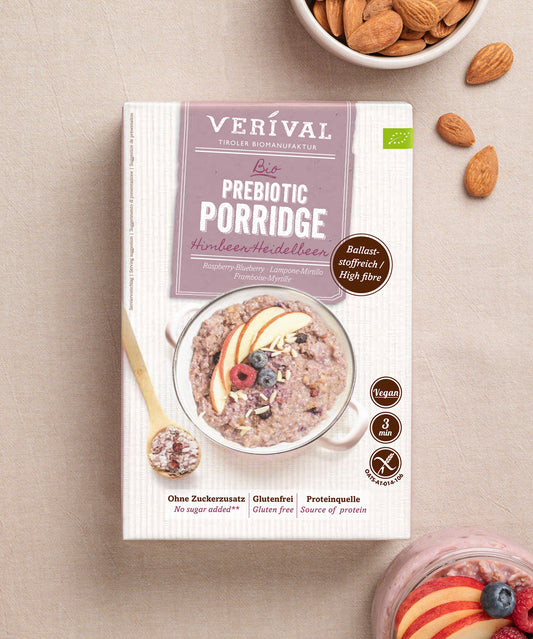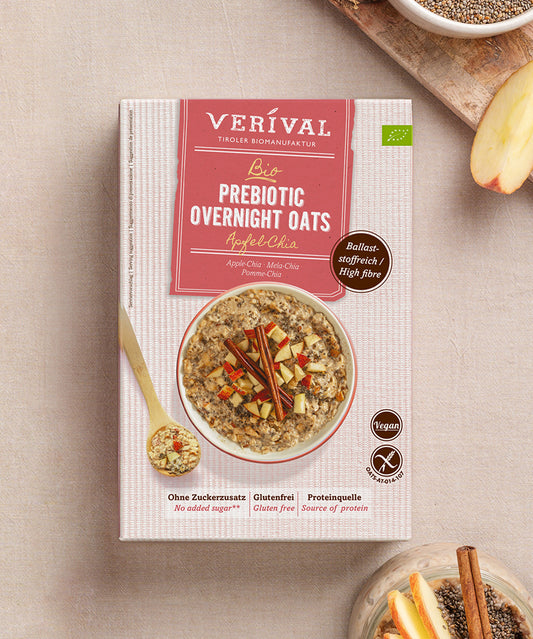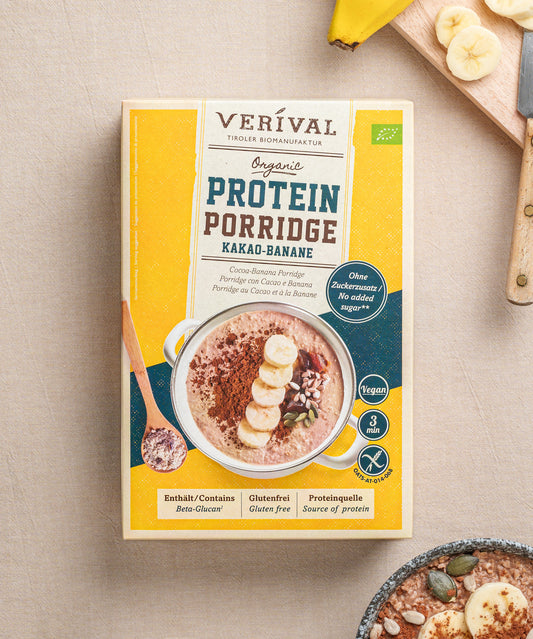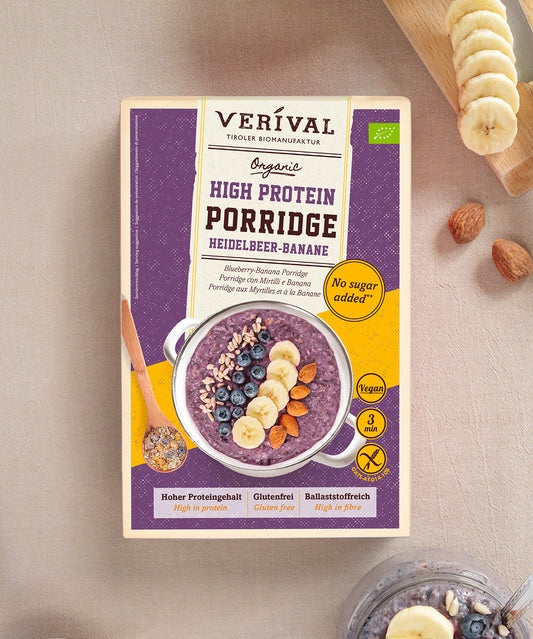Freeze-dried berries from Verival & the best tips for freezing berries at home
We are glad that we don't always have to follow the berry season calendar and can enjoy fresh berries all year round in our mueslis, crunchies, and porridges. That's because our organic breakfast products contain many different freeze-dried berries. But what does that mean, how does it work, and what's the best way to store berries at home during the winter?
Freeze-dried berries from Verival
1. What does “freeze-dried” mean?
Berries are dried very gently using a freeze-drying process. They are frozen immediately after harvesting and then the water is removed from the berries using a vacuum.
2. How does it work exactly?
Water has the special property of changing directly from a solid, frozen state to a gaseous state under vacuum, thereby evaporating instantly. The liquid stage in between is completely skipped, with the advantage that vitamins, nutrients, and colorants are not washed out.
The freeze-dried berries are therefore not only long-lasting, but also remain crunchy and retain almost all of their original vitamins and minerals. When they come into contact with liquid, such as milk in muesli, the berries swell and take on a similar shape to fresh berries.
3. How are berries normally dried?
In other drying processes, the berries are usually dried using heat, which destroys most of the vitamins. Sugar is also often added to extend the shelf life, as there is still residual water.
Freeze-dried berries, on the other hand, have an intense flavor and do not require any added sugar – perfect for our cereals.
4. Which berries are freeze-dried?
The following berries are freeze-dried for our mueslis: sour cherries, sweet cherries, strawberries, raspberries, blackberries, blueberries, red currants, and black currants. You'll find lots of freeze-dried berries in our Berry Crunchy, Berry Urkorn Muesli, and Blackberry Porridge.
Freezing berries at home
For us, there's nothing better than adding a few fresh berries to your healthy breakfast. To make sure we don't miss out on any fruit, we follow our berry calendar. To enjoy berries at home all year round, we've put together some tips for freezing them.
Blueberries, blackberries, raspberries, red and black currants are best suited for freezing. These and many other berries can also be frozen in puree form and used directly for cooking and baking.
When freezing berries, it is important to process them as quickly as possible. Unlike other fruits, berries do not ripen after picking and can only be used for a short time. Once frozen, they can be stored for between six and twelve months.
With these three tips, freezing is easy:
1. Wash
Wash the berries gently and drain well, removing the stems and leaves. When washing, take care not to damage the berries.
2. Freezing
Place the berries individually, with a little space between them, on a plate, tray, or baking sheet, preferably lined with parchment paper, and place in the freezer. This prevents the berries from sticking together later, they retain their shape and are easier to portion. After two to three hours, you can transfer the berries to a container.
If you have less space in the freezer, you can place the berries directly in a container and shake it well every few hours to prevent them from freezing together.
3. Defrost
To thaw the frozen berries, first place them in the refrigerator, then allow them to thaw at room temperature, preferably in a sieve over a bowl.
Our freezer is already filled with the best berries of the season. However, given our appetite for berries, whether they will last more than a few months is another question 😉
























